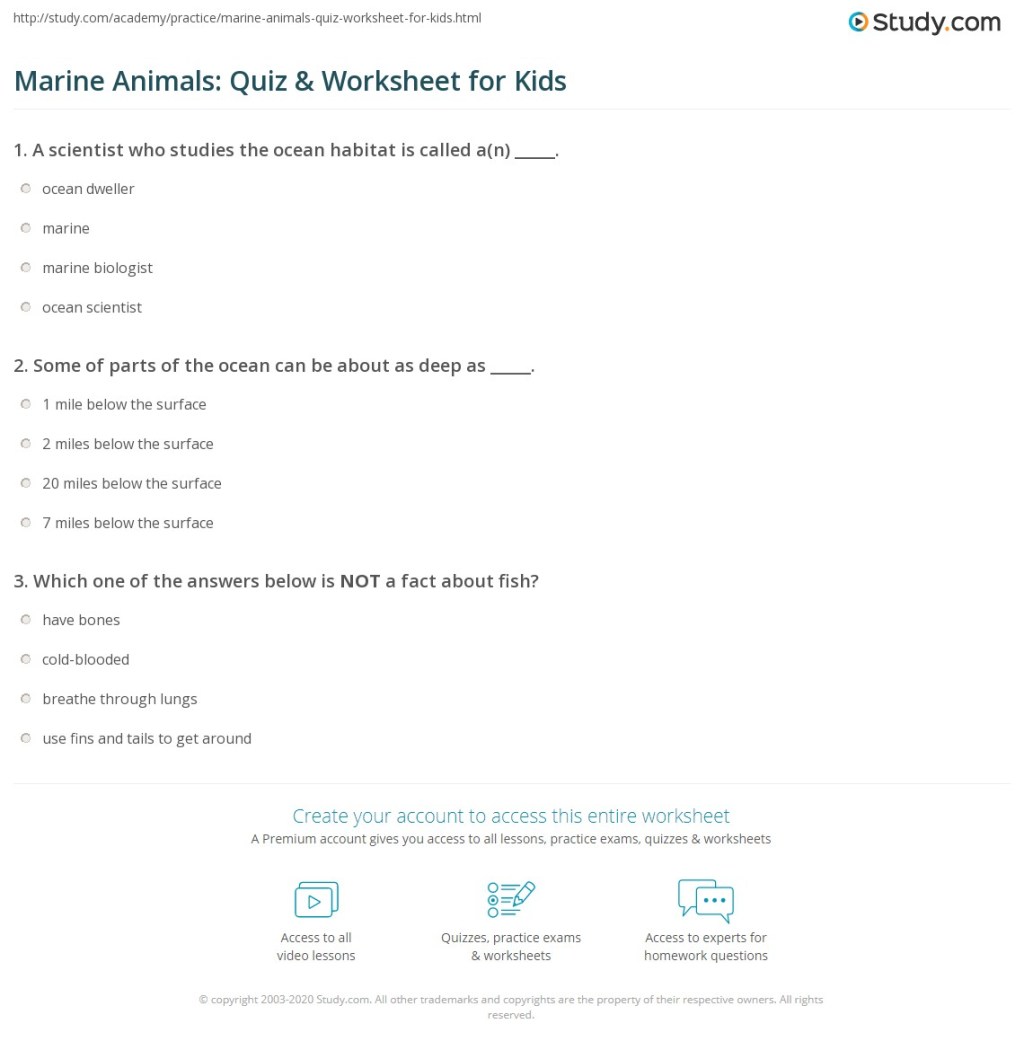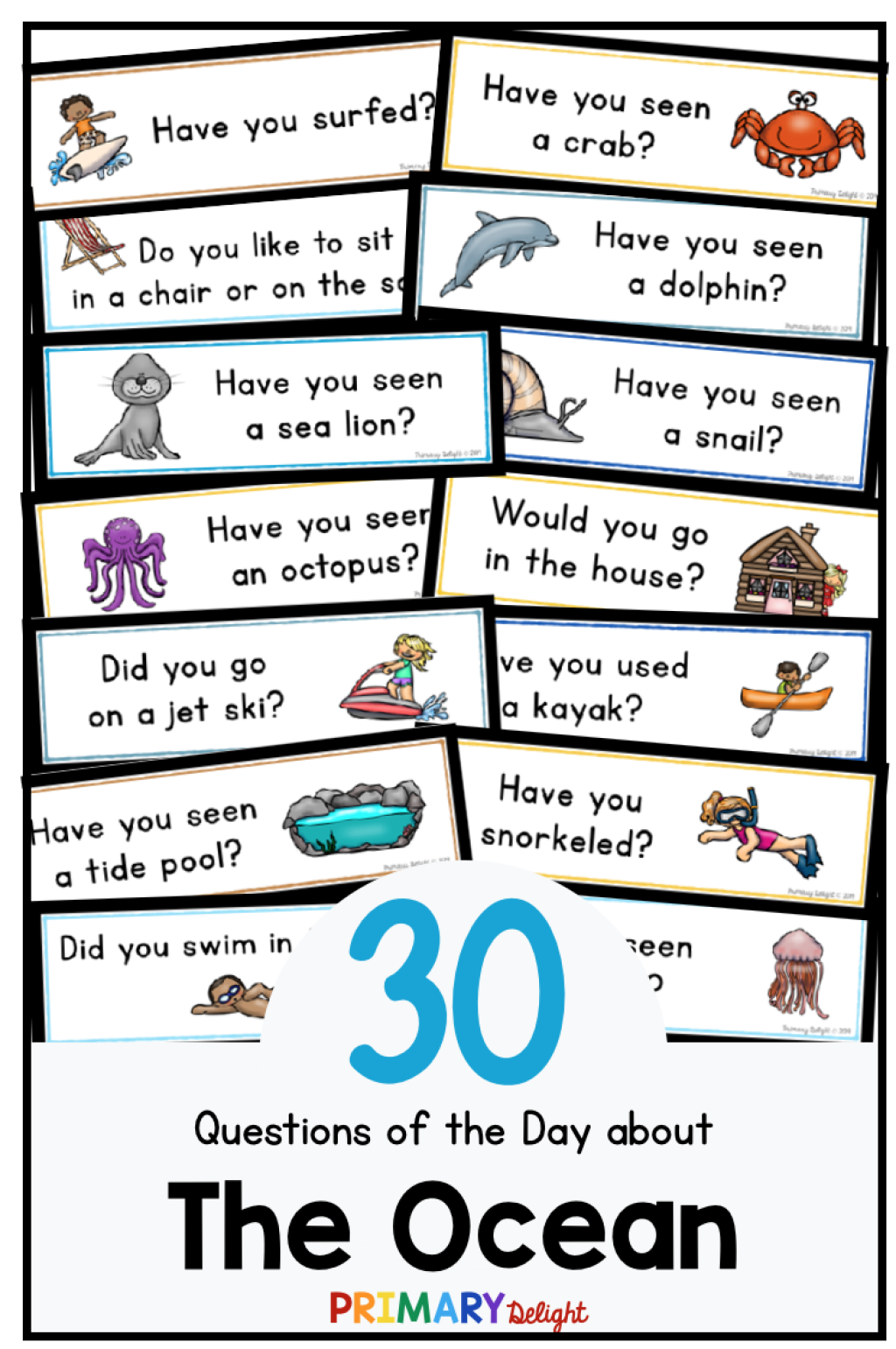Dive Into Ocean Life Questions: Uncover The Secrets Of The Deep And Get Inspired!
Discovering the Wonders of Ocean Life: Answering Your Burning Questions
As a self-proclaimed ocean enthusiast and nature lover, there’s nothing more captivating to me than the mysteries hidden beneath the vast blue waters. From the vibrant coral reefs to the magnificent marine creatures, the ocean holds an abundance of life waiting to be explored. Join me on this exciting journey as we unravel the intriguing world of ocean life and answer some of your most burning questions.
What is Ocean Life?
Ocean life refers to the diverse ecosystem of organisms that inhabit the world’s oceans. It encompasses a wide range of species, from microscopic plankton to colossal whales. The ocean provides a habitat for a plethora of plants, animals, and other organisms, each playing a crucial role in maintaining the delicate balance of marine life.
3 Picture Gallery: Dive Into Ocean Life Questions: Uncover The Secrets Of The Deep And Get Inspired!



Who is Interested in Ocean Life?
Ocean life captivates the interest of both scientists and nature enthusiasts alike. Marine biologists, oceanographers, and conservationists dedicate their lives to studying and protecting the delicate marine ecosystems. Additionally, individuals who appreciate the beauty and wonders of nature often find themselves drawn to explore and learn more about ocean life.
When and Where Can You Experience Ocean Life?

Image Source: study.com
Ocean life can be experienced at various times and in different locations around the world. Whether you’re snorkeling in the crystal-clear waters of the Maldives, scuba diving in the Great Barrier Reef, or taking a boat tour in Alaska, there are countless opportunities to witness the wonders of ocean life. It’s important to consider the seasons and migration patterns of marine species to maximize your chances of encountering specific marine life.
Why Should We Care About Ocean Life?
Ocean life plays a vital role in maintaining the health of our planet. The oceans serve as a primary source of oxygen, absorbing carbon dioxide and regulating the Earth’s climate. Additionally, marine organisms contribute to the production of food, medicine, and other valuable resources. By understanding and caring for ocean life, we can ensure the preservation of these critical ecosystems for future generations.
How Can We Protect Ocean Life?
Protecting ocean life requires collective action and individual responsibility. Avoiding single-use plastics, supporting sustainable fishing practices, and reducing carbon emissions are just a few ways we can make a positive impact on the health of our oceans. Participating in beach cleanups and supporting organizations dedicated to marine conservation are also crucial steps in protecting the fragile balance of ocean life.
Frequently Asked Questions about Ocean Life

Image Source: media-amazon.com
Q: How deep is the ocean?
A: The average depth of the ocean is approximately 3,800 meters (12,400 feet). However, the Mariana Trench, the deepest known part of the ocean, reaches a staggering depth of 10,994 meters (36,070 feet).

Image Source: pinimg.com
Q: What is the largest species in the ocean?
A: The blue whale holds the title for being the largest animal to have ever existed on Earth. These majestic creatures can reach lengths of up to 30 meters (98 feet) and weigh approximately 200 tons.
Q: How many species live in the ocean?
A: It is estimated that there are over one million species living in the ocean, with countless more yet to be discovered.
Types of Ocean Life
There is an astonishing array of ocean life that can be categorized into various groups, including:
1. Fish: From tiny tropical fish to large predatory sharks, the ocean is teeming with a diverse range of fish species.
2. Coral Reefs: These underwater ecosystems are home to numerous species of coral, fish, and other marine organisms.
3. Marine Mammals: Whales, dolphins, seals, and sea lions are just a few examples of the fascinating marine mammals that grace our oceans.
4. Invertebrates: This group includes creatures such as jellyfish, sea stars, octopuses, and crustaceans.
The Size and Material of Ocean Life
When it comes to the size of ocean life, it varies greatly depending on the species. From microscopic plankton that can only be observed under a microscope to the colossal blue whale that can span the length of a basketball court, the range is immense.
As for the material of ocean life, most marine organisms are made up of biological materials such as cells, tissues, and organs. However, there are also various hard materials found in the ocean, such as the calcium carbonate skeletons of coral reefs or the shells of mollusks.
FAQ: Ocean Life Questions
Q: How do marine animals breathe underwater?
A: Marine animals have adapted various ways to breathe underwater. Fish extract oxygen from the water through their gills, while marine mammals such as whales and dolphins have lungs and must come to the surface to breathe.
Q: Can all marine creatures survive in both saltwater and freshwater?
A: No, not all marine creatures can survive in both saltwater and freshwater. Many marine organisms are adapted to the specific conditions of saltwater and would not survive in a freshwater environment.
Q: Are there any plants in the ocean?
A: Yes, there are various types of marine plants in the ocean, with seaweeds being the most common. These plants play a vital role in providing food and habitat for many marine species.
Pros and Cons of Exploring Ocean Life
Exploring ocean life offers a multitude of benefits, but it also comes with certain challenges and limitations. Let’s take a look at the pros and cons:
Pros:
Opportunity to witness breathtaking beauty and diversity
Chance to learn about the interconnectedness of marine ecosystems
Contribution to scientific research and conservation efforts
Memorable and enriching experiences
Cons:
Expensive equipment and travel costs
Potential risks and dangers, especially for inexperienced divers
Impact on marine life if not conducted responsibly
Dependence on weather conditions and seasonal availability
Conclusion: Dive into the Ocean Life Adventure
Embarking on a journey to explore the wonders of ocean life is an unforgettable experience that opens our eyes to the beauty and fragility of our planet. By understanding the importance of ocean life, taking steps to protect it, and sharing our knowledge with others, we can contribute to the preservation of these extraordinary ecosystems. So, grab your snorkel, dive in, and prepare to be amazed by the enchanting world of ocean life!
This post topic: Ocean Wildlife
